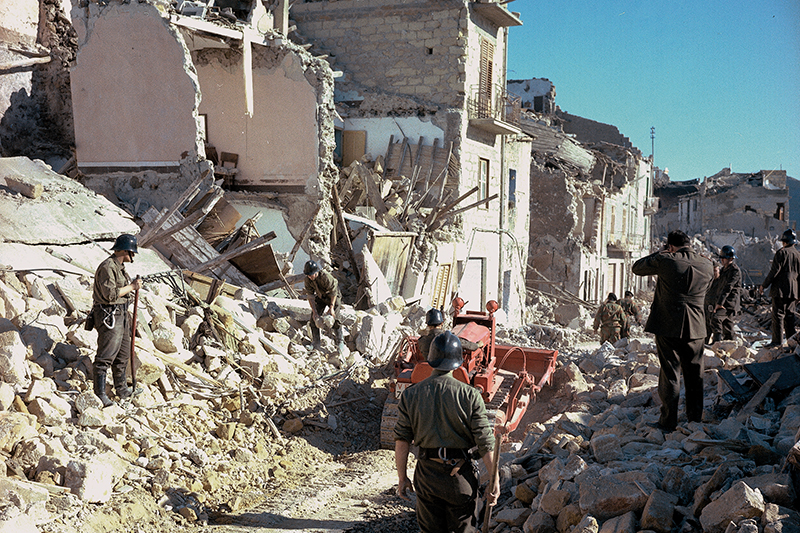The Belice earthquake

In 1968, Italy suffered the first major emergency of the post-war period. On the night between January 14 and 15, a violent earthquake of magnitude 6.5 struck western Sicily, particularly the provinces of Palermo, Trapani, and Agrigento. The Belice Valley was wasted. Gibellina, Montevago, Poggioreale, and Salaparuta were razed to the ground. Also, Menfi, Partanna, Camporeale, Chiusa Scafani, Contessa Entellina, Sciacca, Santa Ninfa, Salemi, Vita, Calatafimi, and Santa Margherita del Belice were severely damaged.
The damage was enormous: 296 people died, more than a thousand were injured, and almost 100 thousand lost their homes. The catastrophe highlighted the dwellings' weakness, which could not support the shocks. The rural building patrimony suffered irreparable damages, with severe repercussions for the almost exclusively agricultural economy of the territory. Thus began a long period of seismic activity, which ended a year later, in February 1969. There were many shocks, the strongest of which were between the 14th and 25th of January 1968 when - with the rescue teams still working among the rubble - a violent shock caused the death of a firefighter and further damage between Palermo and Sciacca.
The complex management of the emergency, the delays in relief, and the homeless forced to move: the Belice earthquake heavily marked Italian post-war history, and thousands of families saw their lives changed forever. After the first dramatic months, the earthquake victims of Belice arrived in Rome to express their views, and there was only one voice: reconstruction. On March 2, 1968, earthquake victims and students met in Piazza Colonna before Parliament. They asked Prime Minister Aldo Moro for an appropriate law to develop the Belice Valley.
That of Belice was a very long reconstruction; the inhabited centers were moved far from the affected places without taking into account the needs of life and work of the area's residents. However, thanks to the period of great human and cultural ferment, the Belice became an open-air laboratory, and the city of Gibellina was reconstructed thanks to the contribution of intellectuals and artists such as Sciascia, Consagra, Schifano, Pomodoro, Paladino.
The "Grande Cretto" by Alberto Burri is a significant representation of his intervention. This contemporary artwork, one of the largest in the world, stands on the ruins of Gibellina and is "frozen" by the artist using cement. A white robe covers the city, protecting it while preserving the memory of its people affected by the earthquake.
Photo: Collapse caused by the earthquake of January 14, 1968 in the Belice Valley in western Sicily / The National Fire and Rescue Service